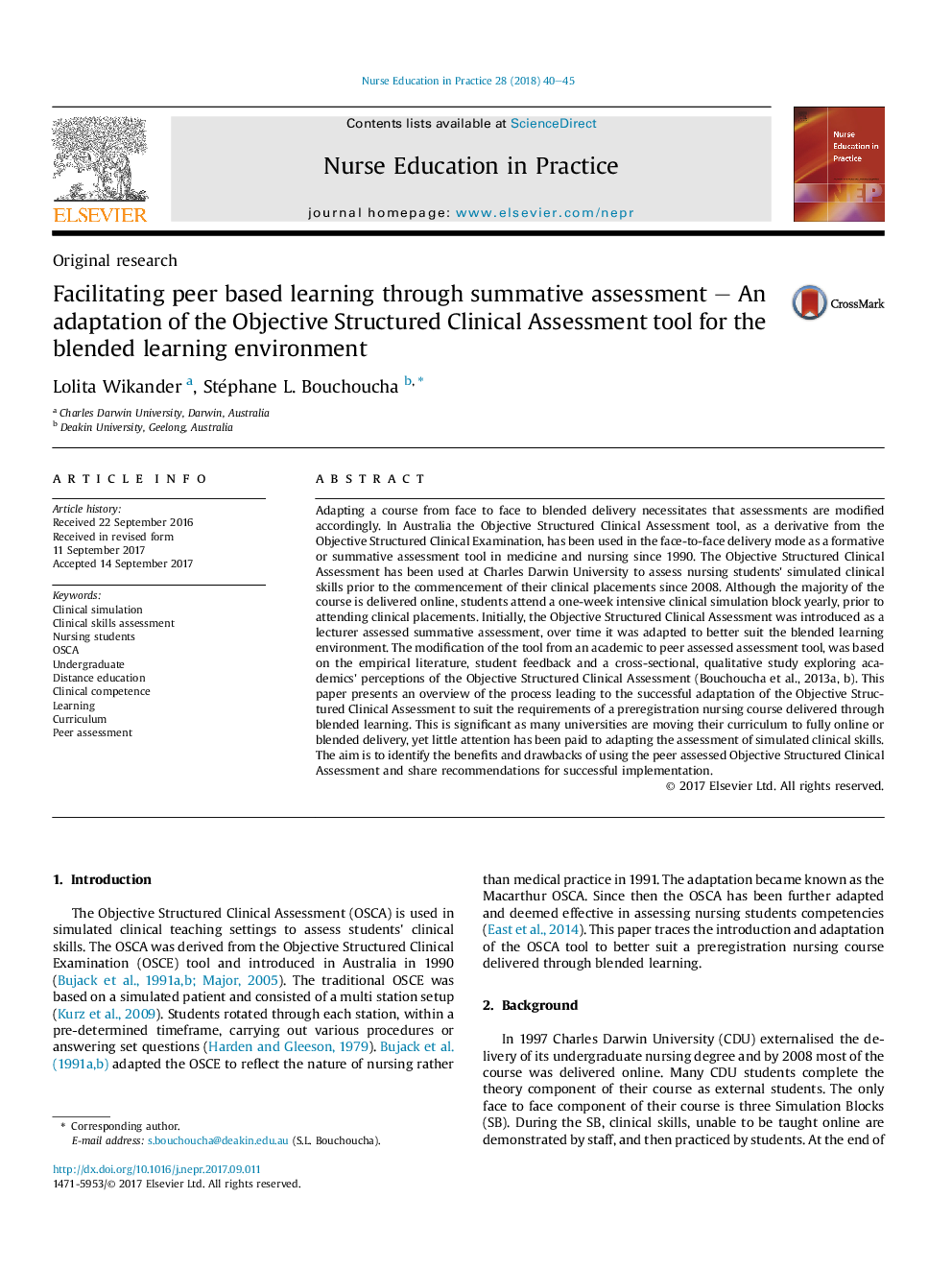| کد مقاله | کد نشریه | سال انتشار | مقاله انگلیسی | نسخه تمام متن |
|---|---|---|---|---|
| 4940367 | 1436509 | 2018 | 6 صفحه PDF | دانلود رایگان |
کلمات کلیدی
1.مقدمه
2 ـ پسزمینه
3 ـ بازخورد دانشجو و مطالعه کارکنان
4 ـ بحث
5 ـ توصیهها
6 ـ نتیجهگیری
- The OSCA tool can be adapted to suit a blended learning model.
- The peer assessed OSCA has many benefits and fewer drawbacks than lecturer led OSCA.
- Peer OSCA enables students to develop metacognitive skills.
- Preparation of students is key for successful implementation.
Adapting a course from face to face to blended delivery necessitates that assessments are modified accordingly. In Australia the Objective Structured Clinical Assessment tool, as a derivative from the Objective Structured Clinical Examination, has been used in the face-to-face delivery mode as a formative or summative assessment tool in medicine and nursing since 1990. The Objective Structured Clinical Assessment has been used at Charles Darwin University to assess nursing students' simulated clinical skills prior to the commencement of their clinical placements since 2008. Although the majority of the course is delivered online, students attend a one-week intensive clinical simulation block yearly, prior to attending clinical placements. Initially, the Objective Structured Clinical Assessment was introduced as a lecturer assessed summative assessment, over time it was adapted to better suit the blended learning environment. The modification of the tool from an academic to peer assessed assessment tool, was based on the empirical literature, student feedback and a cross-sectional, qualitative study exploring academics' perceptions of the Objective Structured Clinical Assessment (Bouchoucha et al., 2013a, b). This paper presents an overview of the process leading to the successful adaptation of the Objective Structured Clinical Assessment to suit the requirements of a preregistration nursing course delivered through blended learning. This is significant as many universities are moving their curriculum to fully online or blended delivery, yet little attention has been paid to adapting the assessment of simulated clinical skills. The aim is to identify the benefits and drawbacks of using the peer assessed Objective Structured Clinical Assessment and share recommendations for successful implementation.
Journal: Nurse Education in Practice - Volume 28, January 2018, Pages 40-45
